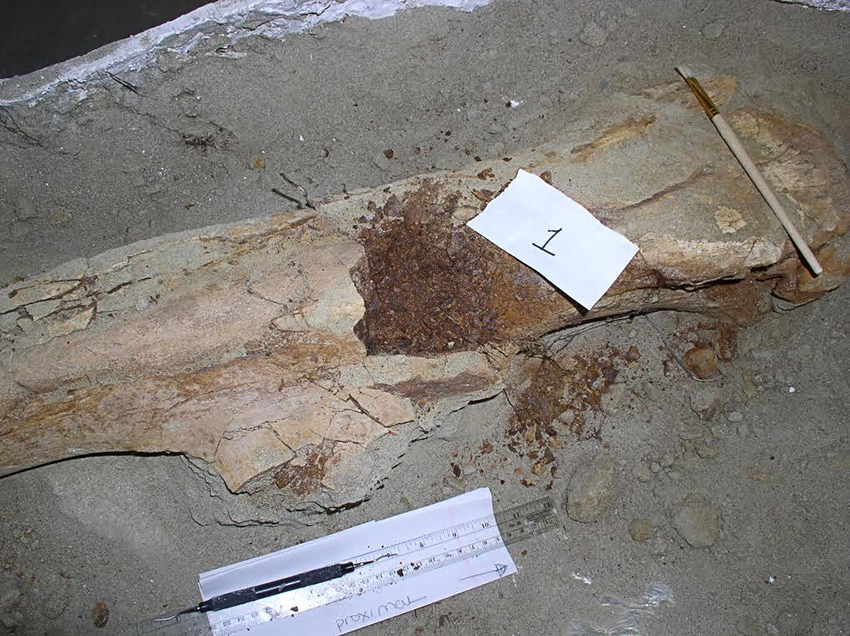Molecular research offers a new avenue of studying dinosaurs outside of solely examining their fossils.
Elena Schroeter, a post-doctoral researcher at North Carolina State University, and Tim Cleland, a UT chemistry post-doctoral researcher, worked together to extract and analyze the peptides of an 80 million-year-old Brachylophosaurus dinosaur.
Peptides are small protein molecules consisting of roughly 2-50 amino acids that control numerous functions, such as fighting off disease and helping the body grow.
The flightless dinosaur’s collagen, a commonly found structural protein, was similar to that of modern crocodiles and basal birds, such as ducks and chickens.
Schroeter said the team used mass spectrometry and bioinformatic software to detect the peptide sequencing. The mass spectrometer revealed the structure of the peptide molecules, and bioinformatics software then ran the data through a large database to tell the researchers what exact peptides were in the sample.
“The software actually tells us what we have in our sample, searching against databases of known proteins, so that way we actually know we have collagen and it gives us a level of statistical confidence in our identifications,” Cleland said.
Schroeter said the dinosaur remains give the scientists a basic look into the phylogeny of the dinosaur, or how it is genetically related to other animals. She added that with enough information about peptide sequencing, any dinosaur can be placed accurately on a phylogenetic tree.
Cleland said the collagen peptides offer the team a look into the evolution of dinosaurs and how this species relates to other animals.
“(This study) gives you the opportunity (to see) how the molecules change over time, allowing you to put the proteins into an evolutionary context,” Cleland said. “It also gives information about how proteins are preserved in bones.”
The pair based their study on the 2007 research of Mary Schweitzer, North Carolina State University paleontologist and the first person to ever extract proteins from a dinosaur, a T. rex. In 2009, Schweitzer first recovered eight Brachylophosaurus peptides.
Schroeter said studying the molecular makeup of a fossil can incur a lot of backlash from within the science community because contamination of the data is very likely. The tiniest organism can land on the extraction tools, ruining the results of the analysis and rendering the study’s results a false positive, she said.
“I took the same sample, and different protocols and more strict parameters throughout, and I also used much more strict anti-contamination procedures while comparing the samples,” Schroeter said.
Schroeter said she used more powerful and accurate methods to analyze the Brachylophosaurus sample than what had previously been used.
Due to the enhanced extraction processes, Schroeter said this study was able to find six new peptides in addition to the initial eight peptides found in the 2009 extraction
by Schweitzer.
“(In) the original paper, the machine did high resolution for the first measurement, but low resolution for the second measurement,” Schroter said. “In this paper, I used high resolution for both of those measurements and then used more stringent discovery settings to analyze those pieces later.”
Schroeter said the next step is to look into proteins other than collagen so that molecular dinosaur research can be expanded.
“Right now, everything we know about how dinosaurs are related to each other is based solely on the shape of their bones,” Schroeter said. “The hope is that if we can get sequences from other dinosaurs, we can actually start to test hypotheses about the evolutionary relationships of dinosaurs using more than just the shapes of skeletons.”














